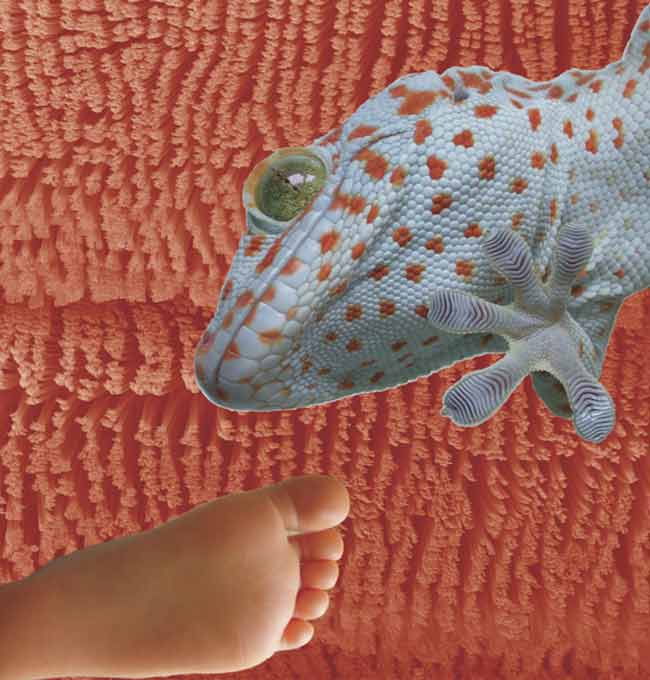Nature's Velcro Lets Geckos Walk on Ceilings

Gecko lizards can walk across a ceiling upside-down thanks to invisible hairs on the soles of their feet. Now scientists have learned the hairs get even stickier with an increase in humidity.
The result could help researchers develop sticker tape.
The foot of a gecko is covered with about a billion tiny hairs called spatulae. Each is some 200 nanometers in length and width. A human hair is roughly 100,000 nanometers wide.
The hairs work like Velcro.
They are so small they wedge between the atoms of a surface and form molecular bonds with the wall or ceiling, putting the gecko in direct contact with its environment.
Up to 1,000 spatulae are arranged into groups called setae that are about one-tenth the diameter of a human hair. Setae are in turn arranged in rows, which are visible to the naked eye.
Gecko nanohairs have stirred up a lot of interest in groups of scientists trying to produce a stickier, stronger, reusable self-adhesive tape. Researchers at the Max Planck Institute for Metals Research in Germany usually study the physics of entire setae, but when they tried to isolate one of the super tiny spatulae, they noticed that a little humidity went a long way.
Sign up for the Live Science daily newsletter now
Get the world’s most fascinating discoveries delivered straight to your inbox.
While trying to attach the nanohairs to various glass plates and wafer surfaces, they found that the more hydrophilic – water-loving – the surface was, the better the hair stuck to it.
After examining this accidental find, scientists determined that ultra-thin water layers on a surface increased humidity enough to increase capillary and adhesive forces. This information will prove useful as researchers move forward in developing better tape.
This research was detailed this week in the Proceedings of the National Academy of Sciences, Early Edition.









